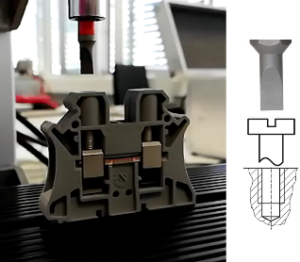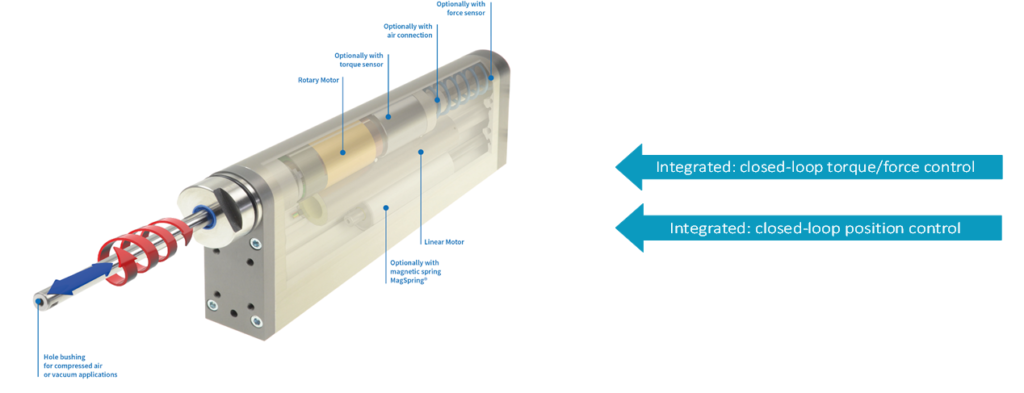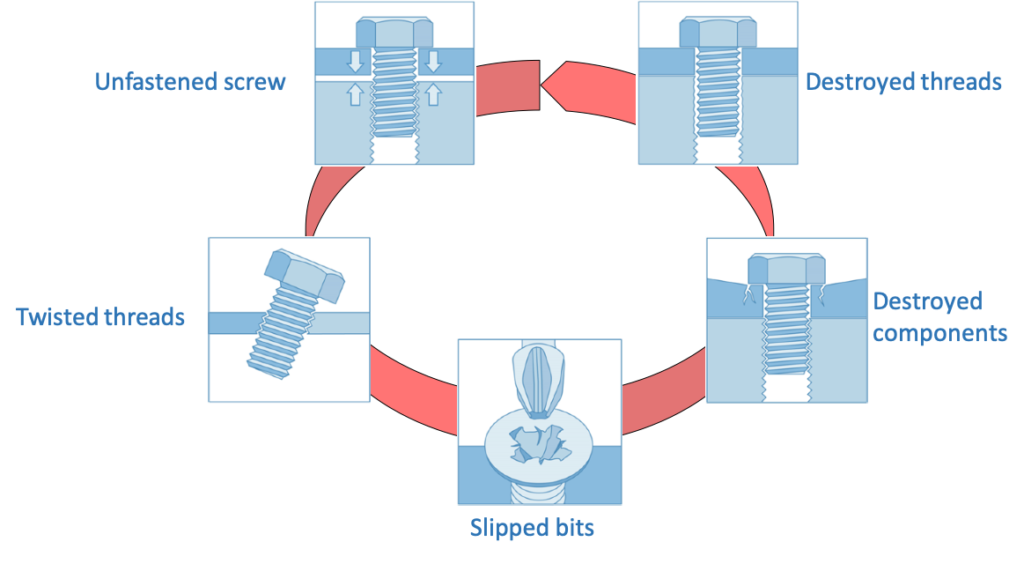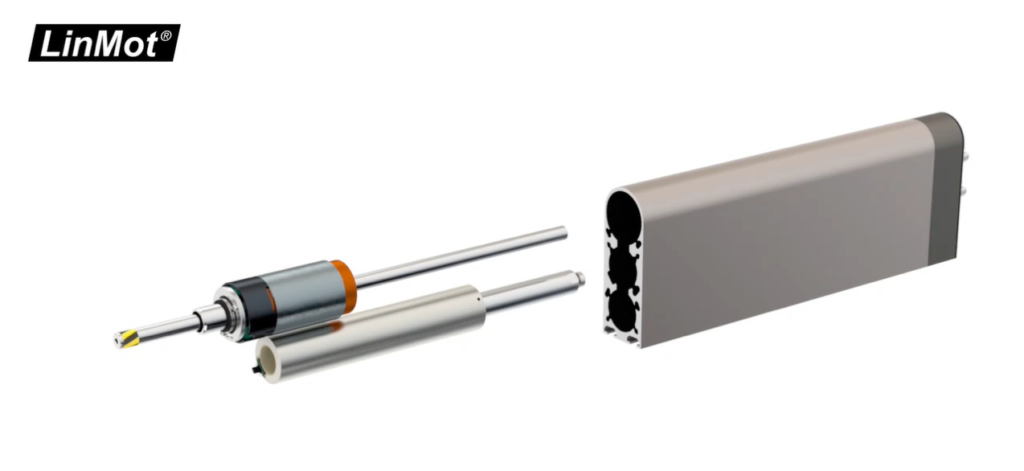 The heart of any manufacturing process is assembling and screwing parts together. We switched from using hand to power tools a long time ago but it is only more recently, the need for smarter tools has become more apparent. Linmot has answered this call by developing a wide range of combined Linear and Rotary motors with key features for product assembly.
The heart of any manufacturing process is assembling and screwing parts together. We switched from using hand to power tools a long time ago but it is only more recently, the need for smarter tools has become more apparent. Linmot has answered this call by developing a wide range of combined Linear and Rotary motors with key features for product assembly.
Precision
Modern manufacturing requires higher tolerances that are repeatable. It is vital that the clamping forces are exactly right. Linmot Linear/Rotary motors can use in-built torque and force sensing all through the assembly or fastening process ensures a reliable, well-built product.
Closed loop position control for both the linear and rotary action gives a precise measure of where the thread starts and how many turns to apply.
Speed
 Using Direct Drive servos gives fast response as lower mass moving parts can be used. This also gives much more accurate feedback from the screwing process for accurate measurement. Linmot’s unique constant force MagSpring counter-balances the mass, allowing the full force of the linear motor to be applied for the dynamic action of the screwing process.
Using Direct Drive servos gives fast response as lower mass moving parts can be used. This also gives much more accurate feedback from the screwing process for accurate measurement. Linmot’s unique constant force MagSpring counter-balances the mass, allowing the full force of the linear motor to be applied for the dynamic action of the screwing process.
Feedback
Continuous reading of multiple parameters is possible during assembly such as Torque, force, speed position of both linear and rotary motions simultaneously. This can be accessed on the fly for decision making and diagnostics.
Quality Control – The Intelligent Screwdriver!
All the available parameters can then be used to check the screw and thread are functioning correctly and if not, the part can be flagged for attention and a quality report stored for each screw assembly if required.
Hygiene
Direct drive linear motor technology eliminates mechanical complexity such as ballscrews, cams and clutches. This enables assembly to be done in high hygiene environments. Stainless Steel parts and and smooth casings also facilitate cleaning making the motors suitable for pharmaceutical and food environments.
Application examples
Assembling cartridge caps
Sequence of operations
- Move down linear motor
If current rise -> Cartridge available. Start point detected: linear motor press mode
If linear position reaches end = no cartridge available
- Turn backwards 360° to find thread entry point
If linear. velocity falls quickly = thread found: stop rotation
- Screwing process / check torque, position and angle
If linear position and rotary angle reach target position = no O-ring detected.
If torque increases and position or angle not ok = No O-ring or two O-ring mounted
If torque increases and position or angle ok = change to torque control mode
- Tightening of cartridge
If torque, position and angle reach target = assembly process OK
- Move back
Checking & pre-assembling of threads
- Move down linear motor
If current rise -> screw available. Start point detected: linear motor press mode
If linear position reaches end = no screw available
- Turn forwards 180° to find screw slot
If lin. position stays = slot not found
if lin. position falls quickly = found
If lin. position moves down slowly = already inside screw slot
- Tightening process / turn fast for 4.5 turns
If lin. position stays = thread not found
If lin. position moves down = compare with rot. angle and check if screw pitch ok
If tightening torque during process higher 0.1Nm = damaged thread
- Move back
-> Cycle time = 0.45sec






